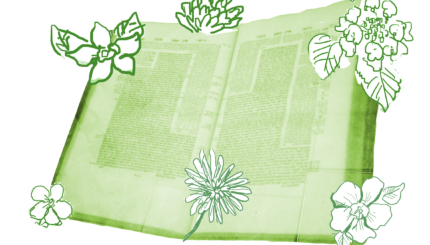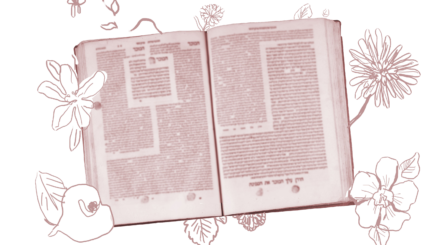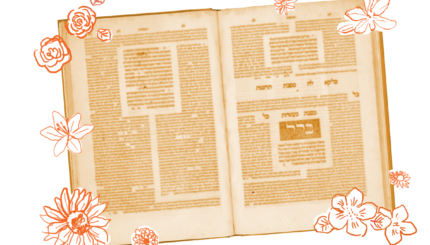Most museum-goers identify Impressionism with Claude Monet’s haystacks, Vincent van Gogh’s starry sky, or Edgar Degas’s sculptures of young dancers. Camille Pissarro’s paintings are less iconic, but they ought to affect fans of Impressionism who are also interested in Jewish art.

Self portrait of Pissarro
Since the identification tags that hang beside his landscapes, cityscapes, and pointillist figures in museums do not usually include his full name–Jacob Abraham Camille Pissarro–many people do not realize Pissarro was Jewish. His decision to use his French rather than Hebrew names reflects some of the struggles he and his family had with their faith.
Pissarro Family vs. St. Thomas Rabbinate
The Pissarro family came from a long line of Spanish and Portuguese conversos. Joseph Gabriel Pizzarro, Camille’s grandfather, moved from Portugal to Bordeaux, France toward the end of the 18th century, and his son Frederic (Camille’s father) relocated to the island of St. Thomas (which is now part of the Virgin Islands). As a port that was a major commercial center, St. Thomas was known as a place where people could practice their faith freely, and was home to a small Jewish community.
In 1826, Frederic married Rachel, his uncle’s widow. The announcement in the St. Thomas Times declared the union “by license from His Most Gracious Majesty King Frederick VI, and according to the Israelitish ritual.” But the editors had not checked their facts. The next day, the rabbis of St. Thomas sent a letter to the paper declaring that the wedding transpired “without the knowledge of the Rulers and Wardens of the synagogue, nor was the Ceremony performed according to the usual custom,” since the Book of Leviticus prohibits sexual relations between a man and his aunt.
In 1830, when Camille was born to this religiously-suspect union, he was officially registered at the town’s synagogue, but it took three years after Camille’s birth for the rabbis to accept his parents’ marriage. This might explain why Frederic and Rachel sent Camille to a school that was part of the Moravian Church. When Frederic died, his will granted large and equal parts of his fortune to the local synagogue and church, no doubt a slap in the face of the rabbis.
More Than an Impressionist
In his early 20s Camille traveled with a friend to Venezuela, where he started painting. There he produced representational works–more or less attempts at photo-realism.
Pissarro returned to St. Thomas in 1854 and moved to France the following year. He painted there until his death in 1903. In France, Pissarro developed his Impressionistic style. Responding in part to discoveries in the field of optics in the late-19th century, the so-called Impressionists (an originally derogatory name applied to the group of painters based on Claude Monet’s “Impression Sunrise”) placed special emphasis on the ways varying light affected landscapes and objects.
The Impressionists applied their paint thickly, and used a process called optical color mixing, in which contrasting colors, when viewed from a distance, appear to blend together. The French art establishment, which at the time believed that painting ought to be “realistic,” like a photograph, criticized the Impressionists’ out-of-focus techniques and also decried their departure from artistic traditions of depicting only important subjects (such as royalty and renowned historical figures, or characters from mythology and the Bible).

“A Washerwoman at Eragny,” 1893
Many of the Impressionists considered Pissarro a mentor, and he was the only artist to exhibit at all eight of the Impressionist exhibitions in Paris, which spanned from 1874 to 1886. Paul Cezanne said of him, “As for old Pissarro, he was a father to me, a man to consult and something like the good Lord.”
Most of Pissarro’s paintings depict landscapes. But he also painted laborers, making the statement that simple people were worthy of being painted, in keeping with his anarchist and libertarian views. These works include “Peasant Woman Digging” (1882), “Two Young Peasant Women” (1892), and “A Washerwoman at Eragny” (1893). Pissarro’s politics also surfaced in the 1890s when Alfred Dreyfus, a Jewish army captain, was tried for treason in notoriously anti-Semitic proceedings. Whether for political or religious reasons (or both), Pissarro broke off his close friendship with Degas, who became anti-Semitic in light of the Dreyfus affair.
A Jewish Painter?
In 1859, Frederic sent Camille a letter on the eve of Yom Kippur reminding him about the holiday. “Your mother asks me to write to you to come and have dinner with us today,” Frederic wrote. “Because this is the evening when we celebrate ‘la fete de Kipur’ and on this solemn occasion the whole family should be together–and tomorrow not work, we should pass that day together.”
Camille’s parents must have felt their son was so disengaged from his religion that he needed a reminder about the High Holidays. But it seems he did not abandon faith completely. Years later, when Camille wrote to a cousin in St. Thomas about his father Frederic’s death, he included the religious sentiments: “God is great, He took away what was dearest to us in the whole world; we have to bow and believe in His providence.”
Camille married Julie Vellay, the non-Jewish helper to his mother’s cook, and their son Lucien, also an artist, inherited his father’s religious struggles. When Lucien became engaged to Esther, the daughter of a Jewish man named Jacob Bensusan, Lucien’s father-in-law-to-be demanded that Lucien be circumcised and convert to Judaism, because his mother was not Jewish. With Pissarro’s support, Lucien and Esther resisted Jacob’s pressure and married without his blessing. Like the St. Thomas rabbis, Bensusan eventually relented and welcomed Lucien into the family.
None of Pissarro’s paintings refer to the Bible or Jewish rituals or include Hebrew inscriptions. However, the art historian Stephanie Rachum has pointed out references to Judaism in three pen and ink drawings that Pissarro created in 1890 for his nieces. In “Capitol,” Pissarro drew a smartly-dressed man with a hooked nose amidst throngs of needy people. In a letter to his nieces, Pissarro identified the “vulgar and ugly” figure as a portrait of a rich Jew, “of an Oppenheim, of a Rothschild, of a Gould, whatever.” The hooked noses appear in two other illustrations in the series, which also depict the Golden Calf.
Although some might consider Pissarro a self-hating Jew for drawing these pictures, it is significant that they were not intended for publication. They reflect the complicated way in which his anarchist political views confronted his Jewish identity; to Pissarro, a rich Jew seemed to have been primarily a rich man and coincidentally Jewish.
Joachim Pissarro, an art scholar and Camille’s great-grandson, suggests that Camille’s complicated relationship with Judaism impacted his work. The artist’s religious struggles helped him develop, according to Joachim, “a critical stance which he could apply to the system of taste and to the conventions that governed art teaching at the time of his arrival in France in 1855.”
By asserting his own relationship to religion, Pissarro developed the confidence and the tools to carve out his own approach to art, without simply accepting what he was told. Surely that too makes a Jewish artist.
Yom Kippur
Pronounced: yohm KIPP-er, also yohm kee-PORE, Origin: Hebrew, The Day of Atonement, the holiest day on the Jewish calendar and, with Rosh Hashanah, one of the High Holidays.


